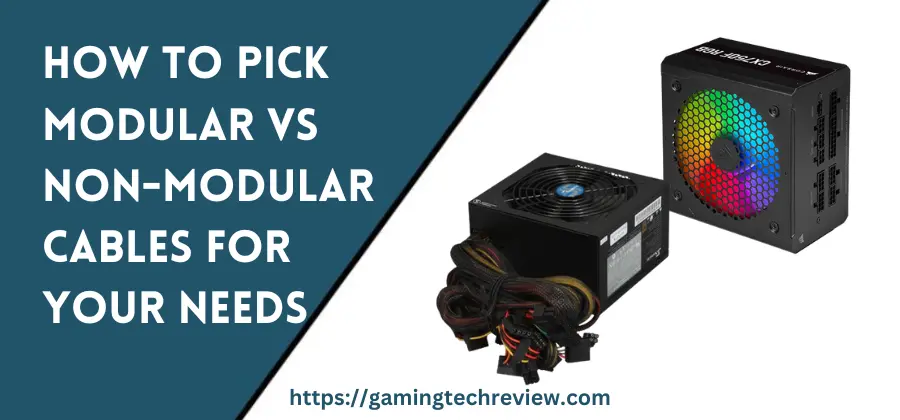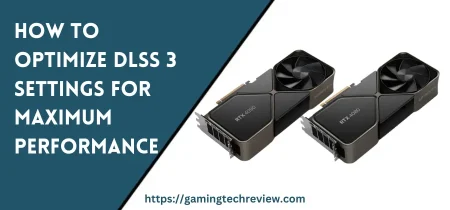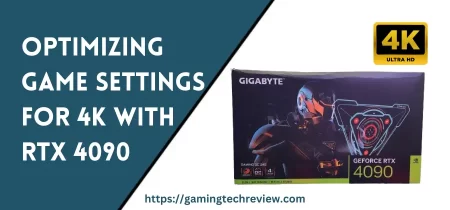
Cables are an essential part of any computer setup, connecting various components together and providing power. When building or upgrading your PC, one of the decisions you’ll have to make is whether to use modular or non-modular power supply cables. Both have their advantages and disadvantages that are important to understand when making your choice. In this comprehensive guide, we’ll cover everything you need to know about modular and non-modular cables to pick the right option for your specific needs.
What are Modular and Non-Modular Cables?
The main difference between modular and non-modular power supply unit (PSU) cables is in how they attach to the PSU.
Non-modular PSUs have all of the cable connectors hardwired into the unit. This means all of the cable connectors are permanently attached and cannot be removed. These PSUs tend to be more affordable but offer less flexibility in cable management.
Modular PSUs allow you to detach cables you don’t need for your setup. These PSUs have ports where you can add and remove cables as needed. This allows for greater customization and cleaner-looking builds since you only have to use the cables your specific components require. However, modular PSUs tend to be more expensive than non-modular models.
Key Factors to Consider
When deciding between modular and non-modular cables, there are a few key factors to take into account:
- Cable management – Modular cables make it much easier to manage your cables cleanly since you can remove unused cables. Non-modular PSUs require you to find a way to hide all the excess cabling.
- Aesthetics – The removable cables on modular PSUs allow for builds that look cleaner with only the needed cables present. Non-modular bundles can look messier.
- Price – Modular PSUs tend to cost more than non-modular models. If budget is a concern, non-modular can save you money.
- Compatibility – Make sure to get compatible replacement cables if opting for modular. Non-modular cables are built-in and don’t have to match other specs.
- Power needs – Consider how many components need power and if a modular PSU has enough ports and cables for them. Non-modular includes all necessary cables already.
- Upgradeability – Modular cables make it easier to upgrade components down the line without having to deal with excess cables. Non-modular cables are less flexible for future upgrades.
- Troubleshooting – It’s easier to diagnose and replace a faulty modular cable than having to replace an entire non-modular PSU.
Pros and Cons of Modular Cables
Here are some key advantages and disadvantages of using modular PSU cables:
Pros:
- Easier cable management with reduced clutter
- Only need to use the cables your specific components require
- Can replace or upgrade certain cables
- More customization options for cable colors/types
- Allows for cleaner, more organized-looking builds
Cons:
- Generally more expensive than non-modular PSUs
- Cables must be compatible (can’t use other PSU brands’ cables)
- Can accidentally disconnect cables when swapping parts
- More points of failure with detachable connectors
- Ensure have necessary cables and ports for all components
Pros and Cons of Non-Modular Cables
Non-modular PSU cables have their own set of pros and cons as well:
Pros:
- Tend to be more affordable than modular PSUs
- All necessary cables already included and connected
- Don’t have to worry about compatibility with replaceable cables
- Permanently connected cables won’t accidentally detach
Cons:
- Much harder to manage excess cable clutter
- Can’t remove unneeded cables for a cleaner look
- Can’t customize with different cable colors or connectors
- Difficult to replace a damaged cable without replacing whole PSU
- Not as flexible for upgrades and component swaps
See Also: RTX 4090 Streaming PC Build – CPU and Setup Guide
Tips for Choosing the Right Cables
When deciding between modular and non-modular PSU cables, keep these tips in mind:
- Consider your budget – modular costs more upfront usually
- Prioritize cable management if it’s important to your build
- Make sure modular cables are compatible before purchasing
- Account for all power needs – non-modular includes all cables already
- Modular allows for future customization and upgrades
- Non-modular is simpler and sufficient for basic power needs
Take the time to consider your specific power requirements, budget, and goals for the aesthetics of your build. Modular makes sense for those concerned with cable management and customization. Non-modular is the cheaper, convenient option for basic setups. With the pros and cons of each in mind, you can determine the best cabling approach for your needs.
Examples of Ideal Use Cases
Here are some examples of ideal use cases for both cable types:
Modular cables work best for:
- Complex builds with many components and stringent cable management needs
- Frequently changed or upgraded components that require cable swaps
- Showcase builds focused on aesthetics and minimal clutter
- Custom PCs with color-coordinated cables for looks
- Budget is flexible and cable management is a priority
Non-modular cables work best for:
- Simple builds with just essential components and cables
- Setups where cables will be hidden away anyways
- Users who don’t change components often after initial build
- Those want plug-and-play power connectivity out of the box
- Budget-focused builds where cost savings matter most
Additional Tips for Modular Cables
Here are some extra pointers for those going the modular PSU cable route:
- Research cable compatibility extensively before buying
- Stick to cables made specifically for your PSU model
- Take note of the wattage ratings on modular cables
- Include a few extra ports in case you expand later
- Carefully insert cables straight into ports to prevent damage
- Double-check locking clips or mechanisms are secure
- Retain unused modular cables for potential repairs
- Check lengths to avoid excessive slack or pulling
- Heatshrink zip ties on modular cables for a cleaner look
Additional Tips for Non-Modular Cables
And some additional advice for managing non-modular PSU cables:
- Plan optimal component placement early on for short cable runs
- Invest in wide, reusable cable wraps or sleeves
- Label excess cable bundles for easier identification
- Route cables out of sight behind motherboard tray
- Avoid tightly cramming cables which could reduce airflow
- Use cable extenders only when absolutely necessary
- Replace entire PSU if one non-modular cable fails
- Check manufacturer warranty and support policies
- Search for cable management cases with extra space
Final Takeaways
When selecting power supply cables, carefully weigh modular vs non-modular benefits:
- Modular allows for maximum flexibility & customization
- Non-modular provides simple all-in-one connectivity
- Factor in budget constraints and cable management needs
- Make sure modular replacements are fully compatible
- Plan component and cable positioning for non-modular tidiness
- Choose modular for frequent changes and aesthetic concerns
- Pick non-modular for basic, budget-friendly reliability
By understanding the core differences between these two cable options, you can make the optimal choice for your specific build requirements. With the cabling foundation in place, you’ll be set up for a high-performing, great-looking PC.










